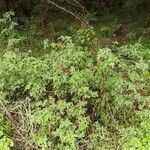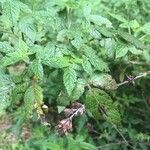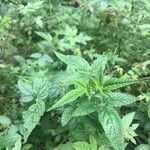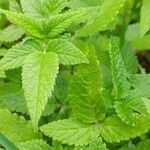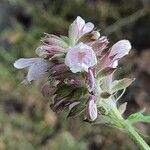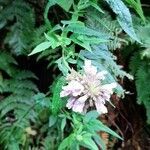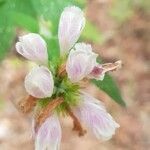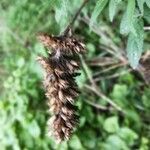Erect perennial to 2.5 m tall; stems slender, 4-angled, glabrous except for a ring of hairs at the nodes. Leaflets lanceolate, median leaflet the largest, 40-70 x 14-24 mm; lateral leaflets 25-45 x 8-14 mm, base occasionally with a lobe or conspicuous tooth. Inflorescence 30-80 mm long; verticils 6-12-flowered. Calyx 11-13 mm long, pubescent, gland-dotted; tube 8-9 mm long; teeth 3-4 mm long. Corolla purplish, 17-18 mm long; tube about 14 mm long, sparingly pubescent without; upper lip 3 mm long; lower lip 3 mm long.
A small woody perennial shrub. It grows 1 m high and spreads 1 m wide. The stem is erect and branching. The leaves are soft and have wide teeth along the edge. The flowers are purple, small and tube shaped.
Perennial to 2.5 m. Leaves digitately 3(-5)-foliolate, leaflets lanceolate, toothed. Flowers crowded in terminal verticils, purplish.
